J&M Recording Studio
838 - 840 N. Rampart StreetNew Orleans LA 70116
Cosimo Matassa’s J&M Recording Studios, operational from 1945 through spring 1956, is rightly recognized as a birthplace of rock ’n’ roll through several seminal titles, when the music was still known as rhythm and blues. These included “Good Rocking Tonight” by Roy Brown in 1947, “The Fat Man” by Fats Domino in 1949, and “Tutti Frutti” by Little Richard in 1955. In addition, there were many other important hits from J&M, such as “Tipitina” by Professor Longhair in 1953 and “See You Later, Alligator” by Bobby Charles in 1955. The J&M facility, just 15-by-16 feet, was at 838-40 North Rampart Street on the edge of the French Quarter in an elegant Federal-style building dating from about 1835. The business grew out of a jukebox operation in the name of J&M Amusement Service owned by Joe Mancuso and John Matassa, Cosimo’s father, who had been running a grocery business in the Quarter since the 1920s.
Cosimo (1926 – 2014), an 18-year-old Tulane University chemistry major dropout, credited the recording studio idea to partner Mancuso. “The first thing we had was a dual Presto disc recorder, it was called a 28N—two Presto 8N recorders,” Matassa said. “There was no intercutting, no tape editing. In fact, those were the good performances, probably some of the best because they were really performances as opposed to the synthesized record you make today. … If you listen to the way the drums sound on the very earliest things, you can tell they were done on one microphone. What you heard in those days was a lot of splash and ‘room tone,’ and not nearly so much presence. So some of those early things, that the records sounded decent at all by today’s standards is a miracle.” The introduction of tape in the early 1950s helped the process considerably.
Despite the primitive conditions, there was an influx of national independent labels from 1947 onward, starting with De Luxe from New Jersey and Imperial from Los Angeles, seeking the New Orleans hit sound. “The guys would come into town and say, ‘New Orleans got some good records coming out, I want to record some,’” Matassa said. And so other indie labels arrived, including such hallowed names as Atlantic, Mercury, Aladdin, Specialty, Chess, Savoy and Modern.
Soon a core group of talented session musicians evolved, based on the Dave Bartholomew Orchestra, with Bartholomew directing many sessions as A&R man and being a prime songwriter. The musicians included Lee Allen and Herb Hardesty, whose tenor saxophone solos would be the template for rock ’n’ roll; Alvin “Red” Tyler (tenor and baritone saxophones), Bartholomew (trumpet), Huey Smith (piano), Ernest McLean (guitar), Frank Fields (bass); and Earl Palmer, who has correctly been identified as the man who put the backbeat in rock ’n’ roll. Matassa was justly proud that his studio was an integrated facility at a time when New Orleans was subject to Jim Crow segregation laws. Even so, black musicians were forced to go to “colored only” restaurants in between sessions.
It wasn’t all rhythm and blues: Matassa was also recording Cajun, hillbilly, gospel and, of course, jazz, notably Papa Celestin and Danny Barker. Some of the artists from outside New Orleans included Ray Charles, Big Joe Turner, and a young Jerry Lee Lewis. Much of J&M’s success was due not only to Cosimo’s engineering skills and engaging personality, but also to the fact that there was little studio competition in the city.
J&M closed its doors in spring 1956, and Matassa went on to open successor studios elsewhere around town, at 525 Gov. Nicholls St. and later 748 Camp St. On Dec. 10, 1999, the 50th anniversary of the recording of Fats Domino’s “The Fat Man,” Matassa, Bartholomew, and Domino reunited for a ceremony to designate the site as a historic landmark (though it now houses a launderette). Matassa was inducted to the Rock and Roll Hall of Fame in 2012.
For more on the roots of rock ‘n’ roll in New Orleans click here.
Cosimo Matassa quotes from “Rhythm and Blues in New Orleans” by John Broven (Pelican Books, Gretna), used with permission.
Videos
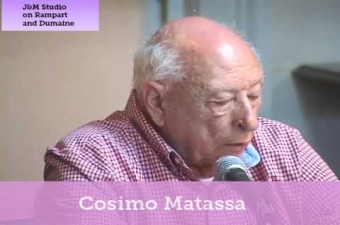
From the 2008 Ponderosa Stomp Conference, Cosimo Matassa and Rick Coleman discuss topics ranging from the Great Depression to Fats Domino (see YouTube for time stamps).
Video © The Ponderosa Stomp Foundation. Cannot be used by third party without written permission.
From the 2008 Ponderosa Stomp Conference, Cosimo Matassa and Rick Coleman discuss topics ranging from the Great Depression to Fats Domino (see YouTube for time stamps).
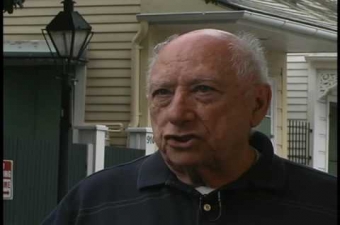
Short interview with influential New Orleans R&B/Rock & Roll music producer, Cosimo Matassa. Shot in New Orleans for the 2005 Mayor's Arts Awards presented by the Arts Council of New Orleans.
Produced by Robbie Denny. Shot & Edited by Donna Schlaudecker.
Video from KnowLA
Short interview with influential New Orleans R&B/Rock & Roll music producer, Cosimo Matassa. Shot in New Orleans for the 2005 Mayor's Arts Awards presented by the Arts Council of New Orleans.
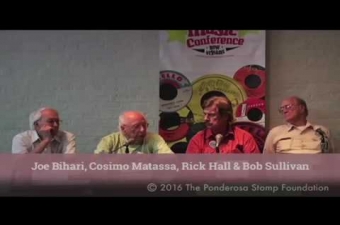
From the 2009 Ponderosa Stomp Conference, "Engineering Panel: Mark Bingham, Andy Taub, Joe Bihari, Rick Hall, Cosimo Matassa, and Bob Sullivan," Matassa discusses his technique.
Video by the Ponderosa Stomp Foundation.
From the 2009 Ponderosa Stomp Conference, "Engineering Panel: Mark Bingham, Andy Taub, Joe Bihari, Rick Hall, Cosimo Matassa, and Bob Sullivan," Matassa discusses his technique.
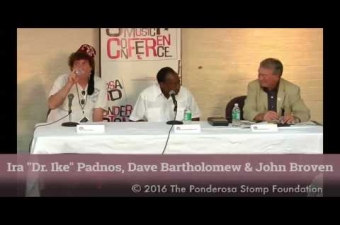
From the 2010 Ponderosa Stomp Conference panel "Dave Bartholomew with John Broven and Ira 'Dr. Ike’ Padnos,” the Rock and Roll Hall of Famer discusses his recorded legacy.
Video by the Ponderosa Stomp Foundation.
From the 2010 Ponderosa Stomp Conference panel "Dave Bartholomew with John Broven and Ira 'Dr. Ike’ Padnos,” the Rock and Roll Hall of Famer discusses his recorded legacy.
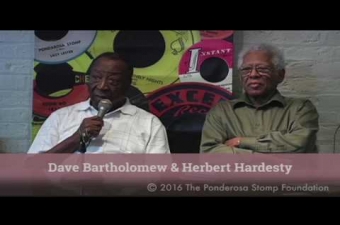
From the 2009 Ponderosa Stomp Conference panel "Dave Bartholomew and Herbert Hardesty with Dr. Ike," Bartholomew talks about forming one of the greatest studio bands in R&B history at J&M.
Video by the Ponderosa Stomp Foundation.
From the 2009 Ponderosa Stomp Conference panel "Dave Bartholomew and Herbert Hardesty with Dr. Ike," Bartholomew talks about forming one of the greatest studio bands in R&B history at J&M.
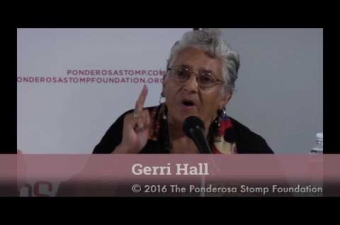
From the 2010 Ponderosa Stomp Conference panel "Gerri Hall with Rick Coleman," Hall talks about Matassa's role in capturing the sound of New Orleans R&B.
Video by the Ponderosa Stomp Foundation.
From the 2010 Ponderosa Stomp Conference panel "Gerri Hall with Rick Coleman," Hall talks about Matassa's role in capturing the sound of New Orleans R&B.
Images

























